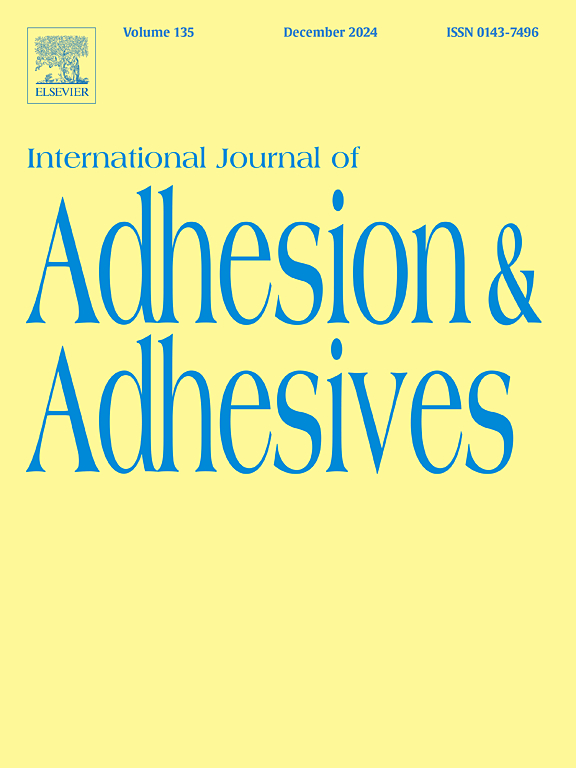高强度轻质注塑复合金属接头表面结构金属零件的增材制造
IF 3.5
3区 材料科学
Q2 ENGINEERING, CHEMICAL
International Journal of Adhesion and Adhesives
Pub Date : 2025-05-01
DOI:10.1016/j.ijadhadh.2025.104045
引用次数: 0
摘要
聚合物-金属混合结构(PMH)越来越多地用于汽车和航空航天工业的轻量化应用。在这项研究中,我们研究了新兴的增材制造与注塑成型的集成,以生产高强度轻质混合接头。采用激光粉末床熔融(L-PBF)增材制造具有和不具有亚毫米大小蘑菇形表面结构的AlSi10Mg衬底,然后用聚碳酸酯(PC)注射成型(IOM)。与结构金属基板的重叠接头显示出显著的连接强度(20.5±3.8 MPa),这主要归因于固结聚合物与金属表面结构之间的微观机械联锁。断裂分析揭示了蘑菇状结构的两种主要的内聚破坏模式(拉伸和剪切),这取决于它们在金属表面的位置。正如数字图像相关(DIC)分析所阐明的那样,这种行为归因于界面剪切应力和二次弯曲的结合。在106次循环下,混合接头的疲劳寿命为连接强度的38%,具有良好的力学性能和工程应用潜力。本文章由计算机程序翻译,如有差异,请以英文原文为准。
Additive manufacturing of surface structured metal parts for high strength lightweight injection overmolded polymer-metal hybrid joints
Polymer-metal hybrid structures (PMH) are increasingly used in the automotive and aerospace industries for lightweight applications. In this study, we investigate the integration of emerging additive manufacturing with injection overmolding to produce high-strength lightweight hybrid joints. AlSi10Mg substrates, with and without submillimeter-sized mushroom-shaped surface structures, were additively manufactured using laser powder bed fusion (L-PBF), followed by injection overmolding (IOM) with polycarbonate (PC). Overlap joints with structured metal substrates demonstrated remarkable joining strength (20.5 ± 3.8 MPa), primarily attributed to the micro-mechanical interlocking between the consolidated polymer and the metal surface structure. Fracture analysis revealed two primary modes of cohesive failure (stretching and shear) in the mushroom-shaped structures, contingent on their location on the metal surface. This behavior was attributed to a combination of interfacial shear stress and secondary bending, as elucidated by digital image correlation (DIC) analysis. The fatigue life of hybrid joints was determined to be 38 % of the joining strength at 106 cycles, indicating excellent mechanical performance and high potential for engineering applications.
求助全文
通过发布文献求助,成功后即可免费获取论文全文。
去求助
来源期刊

International Journal of Adhesion and Adhesives
工程技术-材料科学:综合
CiteScore
6.90
自引率
8.80%
发文量
200
审稿时长
8.3 months
期刊介绍:
The International Journal of Adhesion and Adhesives draws together the many aspects of the science and technology of adhesive materials, from fundamental research and development work to industrial applications. Subject areas covered include: interfacial interactions, surface chemistry, methods of testing, accumulation of test data on physical and mechanical properties, environmental effects, new adhesive materials, sealants, design of bonded joints, and manufacturing technology.
 求助内容:
求助内容: 应助结果提醒方式:
应助结果提醒方式:


